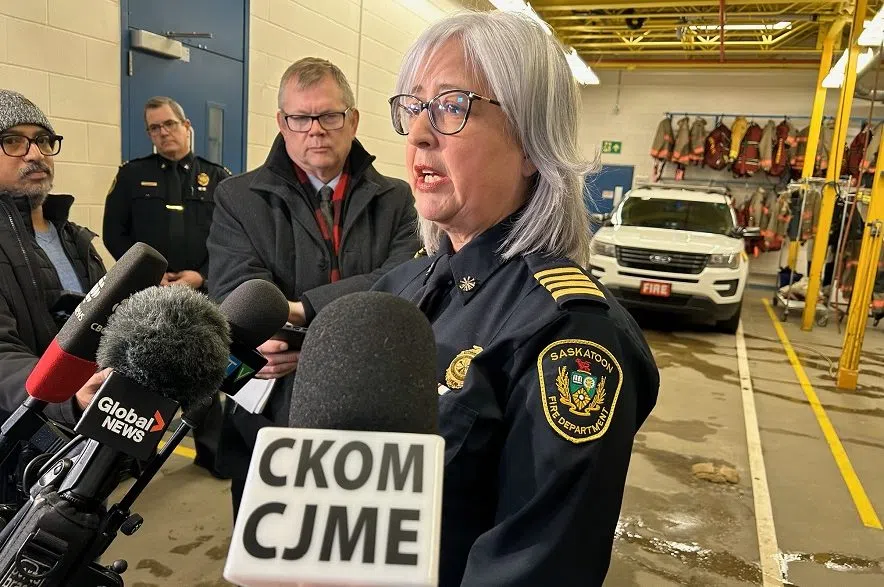Staff at two overnight warming centres are working to provide a safe space for people in Saskatoon.
Women can find warmth at the Saskatoon Indian and Métis Friendship Centre on Wall Street from 11 p.m. to 9 a.m.
The warming centre for men at St. Mary’s Parish on 20th Street will open its doors on December 9.
Read more:
- Prairie Harm Reduction to stay open 24/7 due to no plan from city
- Feds in talks with Saskatoon to help tackle homelessness
- Saskatoon council approves temporary downtown emergency shelter
Pamela Goulden-McLeod, director of Saskatoon’s Emergency Management Organization, said there is a growing need for shelter and warming spaces in the city.
“Ideally, we would be prepared and these locations would be opened in October, and that’s our goal,” she said.
The Emergency Management Organization started working on the project in May, but struggled to secure funding and find locations with enough space.
Prairie Harm Reduction recently opened its doors to offer 24-hour service. Goulden-McLeod said she’s grateful for the additional space, but more is needed.
Between the two spaces, there is room for about 100 people each night, but funding is also required to run the overnight warming spaces.
The Emergency Management Organization and community organizations are seeking funding from city council to support operations. The total funding required to operate the centres and outreach until March 31 is estimated to be $1.2 million.
The money will cover expenses like staffing — including security, medical responders and operations staff — as well as supplies and utilities.
$1 million in funding has been secured from provincial, Indigenous and federal governments as well as community foundations and private donations.
An investment of $200,000 from the city’s reserve for capital expenditures is being recommended to fill the funding gap.
Goulden-McLeod said these spaces will help, but there’s always more that can be done.
“I would say that here in Saskatoon, the need is great,” she said. “We do not have enough resources for everyone. We really do need a navigation center where people can go to year round to access resources at the same place, so you don’t have to walk all over find different resources.”
For adults with children, they can receive support from the Emergency Wellness Centre through the Saskatoon Tribal Council.
Goulden-McLeod said she hopes for a future where warming spaces are no longer needed.
“I’m hoping that we won’t need warming shelters in a year or two, because we will have all the resources in place that people need year round,” she said.
The major difference between warming locations and shelters is access. Warming locations are called “low barrier,” which means there are no requirements to be in counseling or have a case worker or social worker.
The barriers are low to ensure people’s safety, according to Goulden-McLeod.
“There’s a process to access a shelter,” she said. “With a low-barrier warming center, you can just come in and we provide those services.”
There are warming shelters available during the day as well. A list of those can be found at the City of Saskatoon’s website.
Work is being done to develop a new Saskatoon Homelessness Action Plan. The ultimate goal is to create a long-term funding model to alleviate the annual search for funding and locations.
—with files from 650 CKOM’s Shane Clausing











